This Content Is Only For Paid Subscribers
Welcome to our new docuseries exploring what is happening to the office through the lens of trusted and emerging thinkers.
Many companies are starting to move away from the traditional office set-up in favor of spaces that promote collaboration and socialization. Ryan explores why the key to creating new workspaces is to focus on the activities and experiences that the space needs to support, rather than simply trying to replicate what already exists.
Watch Next Video
Video Transcript
Where Is The Opportunity? (01:00)
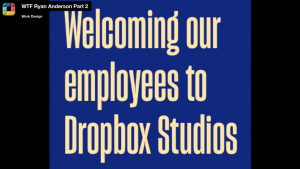 Ryan Anderson: Well, what’s interesting about this question of ‘what is the office?’ – is that I have noticed that a lot of organizations who have taken a very progressive approach to hybrid or remote first work have stopped calling their spaces offices. If you listen to Dropbox call their spaces studios, or I think Atlassians using the term hub.
Ryan Anderson: Well, what’s interesting about this question of ‘what is the office?’ – is that I have noticed that a lot of organizations who have taken a very progressive approach to hybrid or remote first work have stopped calling their spaces offices. If you listen to Dropbox call their spaces studios, or I think Atlassians using the term hub.
They’re trying to shed maybe some of the historical connotations of what office might mean. If office is rows of desks to go do your individual work in conference rooms, to have meetings and private offices for your superiors to oversee whether or not you’re working effectively, then, in many parts of the world, we’re gonna have to move past that really quickly, in order to just, I think, have the highest performance workforce that we can.
I think ‘Culture Hub’ is probably a decent description of where things are going, but it maybe isn’t fully encapsulating of what I think these spaces can be. When I get a chance to tour really high performance spaces for really flexible teams, there are some really distinctive things that we see.
One is that there is a place for socialization for the entire community. Could be a coffee bar, could be the cafeteria that’s been made to be a place to gather all day long, but it’s a place where it’s understood that it’s beneficial to go to reconnect and see people and have conversations and let the new people have a place to hang out where they can connect with others that they might not know.
There’s also more of an emphasis on giving teams really good project space, and I think I used the term immersive before, but it’s like you need a space for those individual teams of strong ties to hang out, ask stupid questions, have lunch, talk about the weekend. I was talking with Callie Williams Yost, who’s an excellent, flexible work consultant recently who said a lot of times people just go in to spend time with others who do the same job, but who have been doing it longer. And they might not call it mentoring. They might not say, I’m going into the office for mentoring. They just wanna be around people that are really good at what they do, so that they can be better at what they do. That’s something that’s really tough to achieve on video.
So those sorts of spaces that are either more project driven or neighborhoods, places to hang with, like your immediate group of coworkers and then, like I said earlier, places for really focused, concentrated work are really important for a couple different reasons. One, if you look at the changing nature of collaboration, it is becoming less synchronous.
So if you were to create a presentation with someone, you probably wouldn’t go into a room for a couple of hours. Somebody would create the document, send it to somebody else, and they’d send it back. It’s kind of like how music is produced these days where people don’t go into the studio together. They do it from different locations. And so, asynchronous collaboration – when you observe it, it looks like a person with their laptop doing focused work for several hours at a time. And desks and phone booths don’t support this well. It really requires a degree of like ergonomic comfort over long durations and the availability of visual privacy, acoustical privacy, informational privacy that’s been tough to achieve.
When I look at the data from Herman Miller’s work from home tool, there’s 28,000 people that have used it. We ask in that tool, what do you struggle with the most at home? Focus, productivity tops the list because distractions do occur. They don’t occur every day.
But if you’re someone that needs like three hours in that spreadsheet, because you’re gonna have to show it to your boss’s boss next week, it’s nice to know the office supports that, and so this diverse range of, I want to be really social, but I also really need to have focused is for me, like the, the anchors of what that hub wants to be and that doesn’t mean there’s not room for desking and other more traditional approaches. But it starts with what are the experiences that people really seek there, if they in fact do have the opportunity to work elsewhere? And those that I just covered are a pretty good bet. Every user group will be a little different. Every building might be a little bit different, but generally, the office, or whatever we call it in the future, needs to be highly complementary to those other places where work happens and needs to find its unique value proposition.
Standards V. Individualization (05:37)
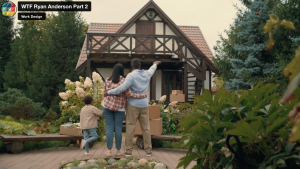 I would never start, by the way, with saying – what do you want? Because people will say, well, I want what I’ve got, but bigger or prettier. But instead focus in on those work activities and experiences. I think we’ve got a really good precedent in how we shop for homes. If we can just use that as an analogy for a second. When you go and you look for a home, does each person in the house need something specific? Yeah. And they might have their own bedroom, but the entire house is not bedrooms. That would be a hotel. You’re looking at these shared spaces, the kitchen, the game room, the back porch, and asking the question, does this variety of spaces essentially cover off on most of the needs of the entire family?
I would never start, by the way, with saying – what do you want? Because people will say, well, I want what I’ve got, but bigger or prettier. But instead focus in on those work activities and experiences. I think we’ve got a really good precedent in how we shop for homes. If we can just use that as an analogy for a second. When you go and you look for a home, does each person in the house need something specific? Yeah. And they might have their own bedroom, but the entire house is not bedrooms. That would be a hotel. You’re looking at these shared spaces, the kitchen, the game room, the back porch, and asking the question, does this variety of spaces essentially cover off on most of the needs of the entire family?
And not everything will be perfect, but you have this sense of, yeah, if we want to entertain, I think we can entertain, or if we want a place for the kids to do homework, I think this would be a good place for them to do their homework. If we need to blow off steam and you know, go play Fortnite or something, this is where we would do that.
And so people are attuned to looking at a footprint and saying, all right, we got a group of users. Does this space generally cover off on our needs? You can do the exact same thing with work. The issue is, I think most organizations would say they’re not really sure what those needs are. So the process is just getting immersed with the employees and saying, what sort of experiences are you seeking? What sort of challenges do you have in your current work process that maybe aren’t well suited at home or elsewhere? And maybe avoiding the question of, do you need this many file cabinets or do you need a private office? I wouldn’t go down that path. I’d go down okay – your team’s been working largely remotely for the last few years.
You made it work. Thank you. I know you’ve been very productive, but hey, let’s try to envision in an optimal situation, how can these spaces just serve you better? What is it that you’d want to do? What sort of experiences do you really miss? Yeah. And get to that. And again, if it were a series of conversations with different user groups over the course of many months, or years, that space can evolve because I really do think on some level, the idea of a big project with a ton of capital. Design it, get it right, build it, and leave it until the lease expiration or leave it. I don’t know that we can do that anymore. The work, even the teams that are on the floors tend to change, the work evolves. Somehow these spaces have to be better at evolving post- occupancy anyway. And so taking a more evolutionary approach to saying, well, we’ve got some spaces they need to be better. We’re really building out a process to understand our users and make these spaces better over time, even to the point of maybe rethinking budget allocations to make it more of an evolutionary thing.
That’s a smart approach for me. It’s got the ability of being able to include some prototyping before you scale everything. It’s not as capital intensive, but the big thing is it’s building dialogue with employees, which I think is critical.
What To Measure (08:37)
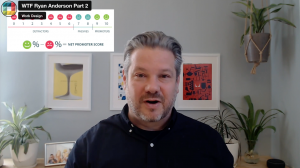 As far as data, we have to move beyond occupancy levels as the sole metric of success.
As far as data, we have to move beyond occupancy levels as the sole metric of success.
This is driving me batty. First of all, because almost no organizations know their pre-pandemic levels, they’re comparing it against really rudimentary benchmarks, and we don’t measure other things in our lives that way. We don’t sit around and be like, Hmm – I like my Netflix subscription, but I used it, you know, one hour and 42 minutes less last week than I did the previous week.
We just say, is it worth it? Or our cars or our kitchens or anything else. We’re not sitting there obsessing over just how much we used it. We’d say, okay, I might drive my car less than I did before. Before I think about selling it, I need to think about the convenience and value it brings me if I want to go see my mom or if I need to go pick up the kids.
And somehow we’ve got to get to something else other than how many people showed up and swiped in, to determine the success of a building that’s kind of a pulse check. But even then, it’s a pretty limited data set. We need something much better.
Just coming at it from a research standpoint, I think the combination of a quick sentiment survey, something the equivalent of NPS, and if those listening aren’t familiar with NPS – net promoter score is how the world of market research went from asking customers like 75 questions to asking them one question. On a scale of one to 10, how likely are you to recommend this product to a friend? Or something along those lines.
So just, if we had something, a simple survey that said, on a scale of one to five, or on a scale of one to 10, how valuable is this space in supporting your productive activities?
It won’t answer all the questions, neither will occupancy data. It helps you to go ask better questions and then supplement it with focus groups. And focus group sounds like a, Hmm – I’m not a researcher, how do we go to a focus group? Just get a bunch of people together that you feel like are representative of your user group and start asking them open-ended questions.
How do you feel about our space? What parts of the space do you love? What parts of the space do you not love? One of the things people will find pretty quickly is there are parts of the space they get used a lot that people don’t like, because, you know, let’s just say a conference room. Conference room’s got 65% utilization, which would be considered quite high. Why? Well, it’s the only one with a whiteboard and a speakerphone. Okay. Do you like it? No, I hate it. It’s always too warm in there and it kind of smells like markers. Okay. But then you find these other spaces like a one-on-one place for an employee. It might only get used 20% of the time. Employee-manager meeting kind of space. Do you like it? Oh my gosh. Thank goodness we have it, because I don’t want to do my one-on-ones on Zoom. I really prefer to do them in person, but they only happen once every other week. You kind of just get this different sense of, well, hang on, there’s two sides to this coin.
There’s the sentiment and then there’s the use or occupancy and value, whatever you want to call it. So yeah, I’d probably start there. I wouldn’t make it super crazy. I do think there’s huge value in tools like the Leesman Index and others, but I’d just start with asking people, how useful is this space to you? How valuable is this space to you? And see where they start. Try to get a sense of it and then compare buildings, try to figure out – why are these answers different?
That’s how I would do it.
Desirable Experiences (12:06)
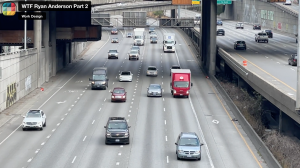 Here’s some things that we know people enjoy from the office, give us a sense of what’s most important to you as a user group.
Here’s some things that we know people enjoy from the office, give us a sense of what’s most important to you as a user group.
I also think it would be really useful to know their proximity to the office. If it were me and I were managing a facility, I’d want to first start with knowing how far people are from that facility, like how far they live, and then what sort of experiences they found most valuable there.
And the reason I’m mentioning their distance is that I do think that commute time and cost is one of those factors that I’m not sure we’re gonna want to wage war against in the future. It appears to be from the research we’ve done, the research that Leesman has done and others, the single factor impacting office occupancy most right now.
And so it might be that we find a way of overcoming long commutes and really expensive commuting costs. But if you’ve got a user group that is mostly 30 to 60 minutes away, I think the behaviors are gonna be very different than those that are within 20 minutes. If you’ve got people that are within 20 minutes, they might be popping in and out of the office more. They don’t mind coming over for a meeting, heading home to do some focused work. You’re gonna see a lot of dynamic use. If it’s people that are farther away, you’re gonna see a much more intentional, like, I’m coming in Tuesday, and I need to do all this when I’m on Tuesday. You get people that are even farther. You’re going to see the space used almost more in events capacity, where it’s like, oh, our whole team’s getting together for three days next month.
So between asking about where people are relative to the location and the sort of experiences they’re seeking there. And I think that’s a really great start. And again, it doesn’t have to be a huge, exhaustive survey of every single employee that rolls up into some massive report. We do those sort of research activities that are really, really big and they’re useful. As I mentioned, we survey 10,000 people every quarter, but just having those conversations with a regular cadence, being present among the people you serve, that’s where all the color commentary comes in. That’s what gets you beyond the data to get to some of the qualitative gems.
I do tend to think about facilities and corporate real estate leaders as product owners. The places they deliver and manage our products that serve the consumer, which are the employees.
And so being able to just go to a simpler set of questions that people are glad to respond to, I think helps those product owners ask much better questions. That’s the way I view occupancy and utilization data as well. If you see varying levels of use, one part of the facility is 32% used. The other’s 48% used. It would be a mistake to say that the 48% used is a better space, but it does give you a chance to go say, why? Why is this used more than the others? And tell us about the activities happening here. Because the data that we need, I mean, I’m sure we’d all love it if it just provided the instant answer to our decisions, but the data that we need ideally is informing better questions to help us make smarter decisions.
The Challenges (15:14)
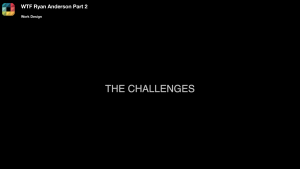 There’s several hurdles. One is management’s preoccupation with where people are. I think we should be past that at this point, and instead they should be preoccupied at how the organization can work better. I think capital cycles, like just the ways that organizations budget capital for big changes in workplace is limiting because it ensures that those spaces are feeling super tired and largely out of date by the time they’re in year four, five or six.
There’s several hurdles. One is management’s preoccupation with where people are. I think we should be past that at this point, and instead they should be preoccupied at how the organization can work better. I think capital cycles, like just the ways that organizations budget capital for big changes in workplace is limiting because it ensures that those spaces are feeling super tired and largely out of date by the time they’re in year four, five or six.
And then I think, like I said before, this hesitancy to engage employees in talking about their needs and wants for fear of disappointing them or for fear that you can’t act on them is really limiting. And I understand that. It’s not a satisfying thing when you ask people for their input and then you can’t deliver on them.
But if you set it up right and say, Hey – we’e just trying to be more in touch with you, understand this over time and the employees read the facilities and real estate team as having just a sincere interest in understanding them and their work that that’s able to be overcome as well.
But between, you know, too much of a focus on where versus how at management levels and too much hesitancy to engage deeply with the employees and their needs within the facility’s real estate team, and then the budget to actually go, instead of dropping huge amounts of money and making the space right, but instead focus on incremental improvements each year.
Those are three that I’d start with.
Performance As Cohesion & Support (16:51)
 We should talk about what performance really is, because there were days when we could link, to an extent, an office with very specific productivity metrics when people were tethered to their desks and they did all their work on a keyboard and mouse and it was data entry, and you could kind of measure that. But I think that’s a really, really old way of looking at it at this point. And I do think we can take a look at performance, but we’d have to define it a little bit differently.
We should talk about what performance really is, because there were days when we could link, to an extent, an office with very specific productivity metrics when people were tethered to their desks and they did all their work on a keyboard and mouse and it was data entry, and you could kind of measure that. But I think that’s a really, really old way of looking at it at this point. And I do think we can take a look at performance, but we’d have to define it a little bit differently.
It would have to probably start with a degree of cohesion, shared sense of purpose, even sense of belonging that team members. Did the space actually help the team be a better team? And then we could get into specific activities that people need to have supported that they might not have supported at home or elsewhere, and determine whether or not the facility’s adding value, whether it’s performing or helping people to perform based on those sort of metrics.
And I think it would be fun to experiment with that. I haven’t seen a lot of organizations do it. We did feature Steve Todd that had a workplace at NASDAQ on our podcast in our first season. I think that there’s an organization and a person who’s really thought differently about what those sort of metrics want to be.
But again, it’s something you kind of have to figure out with employees. I don’t know that there’s any sort of pre-existing benchmark for how well a facility performs, unless we’re talking about energy management, those sort of metrics. If we’re talking about how it works for the employees, I think you’ve got to figure that out with the employees.
It’s About Teams (18:27)
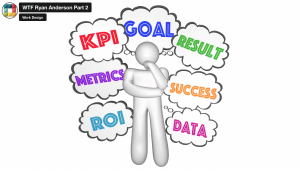 Teams are the nucleus for future workplace design. I don’t think it’s about individuals in the way that it was. Yeah, teams are a really good kind of way of living between the community and the individual. All three are important – individual team and community. But at a team level, assuming, it’s a big assumption, but assuming the team leader is equipped to be able to do this, she or he can engage the employees and say, okay – here’s our goals, and they should know, by the way, what their goals are relative to the greater goals of the organization.
Teams are the nucleus for future workplace design. I don’t think it’s about individuals in the way that it was. Yeah, teams are a really good kind of way of living between the community and the individual. All three are important – individual team and community. But at a team level, assuming, it’s a big assumption, but assuming the team leader is equipped to be able to do this, she or he can engage the employees and say, okay – here’s our goals, and they should know, by the way, what their goals are relative to the greater goals of the organization.
So these are our four corporate goals. This is what our department’s trying to do. This is what our team specifically has to own as a part of it. So let’s rally around our goals. Let’s be goal focused in our performance metrics. Let’s not let presenteeism or somebody just showing up, either online or in person be viewed as productive.
It’s all about can we get to these goals together, and then let’s figure out a way to work most effectively. And by most effectively, that also takes into account people’s personal needs. Okay – Jim, you gotta drop off your kids each day at nine, pick them up at two. Cool – so you’re probably going to want to be in the space more in the middle of the day. We’ll catch you on Zoom at four o’clock. Or somebody else might have, you know, a sensory or cognitive need that says, oh – I’m gonna need this sort of specific environment. You can do that at a team level, because the team leader can know their employees well enough to say these are the goals, but this is us, like this is how we’re gonna get there.
And for organizations that haven’t empowered their team leaders to go have those conversations, it’s going to be tough because the individuals don’t know how to take control of their productivity and redo, kind of rework the way they work unless it’s part of something bigger and it’s darn near impossible to do it across an entire company.
So yeah, I think teams are our key, and when I say teams, we should think of it in terms of functional, but also project with maybe project being arguably even more important, but I don’t know that most organizations have always structured their team leaders and their team makeup in a way that fully enables those groups to go figure out how they should work to be most effective.
If you had 20 people that all had the title HR specialist or HR manager, and half of them were working on new benefits rollout and the others were working on a workday deployment, their processes and their activity is going to be totally different. So we really need to see beyond job titles and try to understand the nature of the team.
Now, the good news is, I don’t think most teams ask for things wildly divergent, like, we’re going to work from 3:00 AM till 9:00 AM every day, and we want to work in a fuzzy room with a bunch of, you know, video games. Most of them are gonna say, well, there’s a core set of things we might need.
And I do think neighborhood based planning, where we take a look at basically using activity based principles, like giving a team a variety of spaces and all those spaces are shared within that team is a wonderful way of having that facility flexibility. So if the team adds two new people or decreases two new people, the space isn’t going to change.
You can land on a standard kit apart, but that the team feels like I know where my people are, I know where to put up our content. We’ve had some sort of voice that our particular team needs, a little more project space, then maybe the individual booth that that team needs. And that the organizations have their standards, but they’re just kind of tweaking the mix of what each group gets in order to allow that group to be most successful.
I’ve seen it in certain parts of the world. I mentioned Sydney earlier, I’ve seen neighborhood- based planning done really well there, Amsterdam, less common here. We’ve been more into assigned rows of desks in the US or occasionally everything being fully shared, but neighborhood-based planning is probably a pretty good response to that team level dynamic that’s driving workplace design.
The Process (22:21)
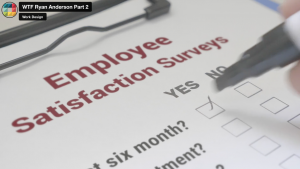 I know there’s a lot of short-term pressures on office occupancy and what’s happening now, and it feels like we’re in this muddy time. And so it feels like you can’t take a long-term approach because it feels like there’s too many ambiguities. But it’s only those organizations that begin to focus long-term on what their spaces want to be that can navigate all the craziness that exists right now.
I know there’s a lot of short-term pressures on office occupancy and what’s happening now, and it feels like we’re in this muddy time. And so it feels like you can’t take a long-term approach because it feels like there’s too many ambiguities. But it’s only those organizations that begin to focus long-term on what their spaces want to be that can navigate all the craziness that exists right now.
And so if you said as an example, all right, we’ve got X million square feet or X thousand square feet or meters, and we don’t have the capital to go redo it all. So we’re going to start by incrementally making some of these spaces better. Let’s pick a building or a part of a building, and let’s begin by engaging the groups. Hey – we’re just trying to understand how you’re working differently now than you were in the past. Tell us about what you do. Tell us about how the team works together. Tell us about what you find to be really effective from home, or what you really feel like the office needs to do better.
No promises. We don’t have a project coming up. We’re not redoing the whole thing, but we’d like to find ways of making it better. Start by trying a few things. Maybe it’s converting a conference room to a project room. Maybe it’s providing some more focus spaces in the open?
And then, see how it goes while you’re engaging another group. It’s a very different process, but it can help anchor like, okay – based on what we’re hearing, this is where these spaces need to go over time. And just by the sheer act of engaging the employees, you’re assuring a better level of emotional investment and agency from them in the space, so that in three years from now or maybe sooner, we can all collectively say the employees gave some voice to how these spaces wanted to be, and we can see that their utilization rates and that their impact to productivity feels better because they were based on what the employees work processes had become, as opposed to hoping everybody gets back in the office. And then three years from now hoping that somehow the space as it existed, pre-pandemic, has magically mirrored up with the new ways of working that have developed more recently.
The Ecosystem (24:34)
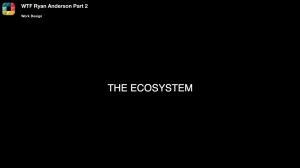 The office and the workplace are no longer synonymous. And the part that we haven’t touched upon at all is organizations will need to begin to figure out how to support people at home.
The office and the workplace are no longer synonymous. And the part that we haven’t touched upon at all is organizations will need to begin to figure out how to support people at home.
And that includes those that might only have people working a day or so from home, or those that have a stronger mix. And by that I mean it can just start with a baseline level of conversation and training. So in the same way that we said, Hey – how do you work? How can you work better? Organizations, if their employees are spending 40 or 60% of their time working from home, can’t just ignore that time forever. You have to work to ensure that people are trained up to be most productive.
If you’ve got a really stressful day, high degree of cognitive load, get outside. Open up that front door, get on the balcony of your yard if you’ve got one, take a breath. Oh – you don’t have a good ergonomic chair or a good, high adjustable table? Move around more. Take that laptop to the kitchen and stand up for a few minutes and maybe think about going and sitting somewhere else. You’ve got to vary your posture. If your WiFi sucks, what does it look like to be able to think about how to, you know, leverage certain parts of your home where you’re going to get a better WiFi connectivity for high data use needs?
It’s that kind of stuff. And yes, I do believe that organizations should be getting their people good chairs amongst other things at home, but, IT as a precursor to all of this years ago, said, we’re gonna support people wherever they are. And they did. They enabled it. Now, facilities’ real estate teams need to embrace that same mentality that, well, we’re really a workplace team, and the workplace isn’t just synonymous with our corporate portfolio.
It exists as part of an ecosystem, and it’s our job to make sure that wherever someone is, they’re healthy, they’re productive, they have a sense of belonging and that we’re getting the most out of our investment in them.
We Can’t Do It Alone (26:28)
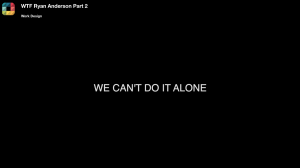 Where we want to go, and then how we want to all operate together, because we are in this together, we can take the attitude that, well, in a world of more hybrid working, we’ll just see a 20 or 30% decline in office space, and that it’ll just be a smaller version of what we had, or we can collectively say no.
Where we want to go, and then how we want to all operate together, because we are in this together, we can take the attitude that, well, in a world of more hybrid working, we’ll just see a 20 or 30% decline in office space, and that it’ll just be a smaller version of what we had, or we can collectively say no.
I think this can be a whole lot better than what it once was. And yeah, we’re gonna see some portfolio reductions, but if these spaces are better, that’ll actually reverse the demand curve and people will start using them more over time. And our industry will be even a better place 10 or 20 years from now than where we started.
Feeling Inspired? Here Are the Actions You Can Take Now:
- Tune into Looking Forward. Use MillerKnoll’s podcast on the future of work (on Spotify or Apple Podcasts) to help align you and your team on key issues to be addressed. If time is tight, begin with episodes 1, 4, 6 & 7 of Season 2. If you have more time, consider using it as an internal “book club” to align on key priorities for your team. We’ve heard feedback from many organizations who have enjoyed doing so.
- Pilot a focus group. Surveys are useful, but are better at providing breadth rather than depth. If you’ve never done so before, try conducting a focus group to discuss work experience with a team outside of CRE. Don’t begin by asking them about space, but rather about how they’re working: how it’s different than a few years ago, what is going well and what is challenging, and then move on to learn what value they’re seeking from your spaces and how they’re doing. Imagine that your spaces are a product and you’re meeting with “customers” to understand them and their needs. Then, consider scheduling monthly focus group sessions with various other groups and documenting what you learn.
- Establish a long-term value proposition for your spaces. While there may be short-term pressures to improve occupancy rates or sublease unused space, dedicated time as a team to align on this question, “How will our spaces deliver value to our employees over time?” This may vary by location and business function and might include considerations such as “connecting more deeply than what’s possible on video”, “providing spaces for uninterrupted focus”, “fostering a sense of belonging” or any number of other experiences. Then, use this vision to ensure that your spaces do a better job of delivering that value than what can be experienced elsewhere. That vision will also inform short-term decision-making.
Mentioned Reading:
Resources:
- MillerKnoll.com
- Ryan Anderson’s Work Design Magazine Articles
- Future of Work Podcast
- Looking Forward Podcast
Meet Ryan Anderson, Vice President of Global Research and Insights

For over 100 years, Herman Miller has been a leading voice in the design of home and office spaces—and Ryan Anderson’s team of researchers and insight sharers bring it all together.
Ryan is at the forefront of questioning the status quo, seeking to better understand how to create better spaces for working and living. When it comes to better understanding the future and the spaces we’ll inhabit, there isn’t a topic Ryan isn’t ready to explore.
Areas of Expertise: Workplace (Past, Present, Future)
Episode 2 Part 2 Credits:
- Created By Bob Fox
- Produced By Work Design Magazine
- Directed By Bob Fox
- Edited By Katie Sargent & Bob Fox
- Special Thanks to Amanda Gram & Malena Boylan

